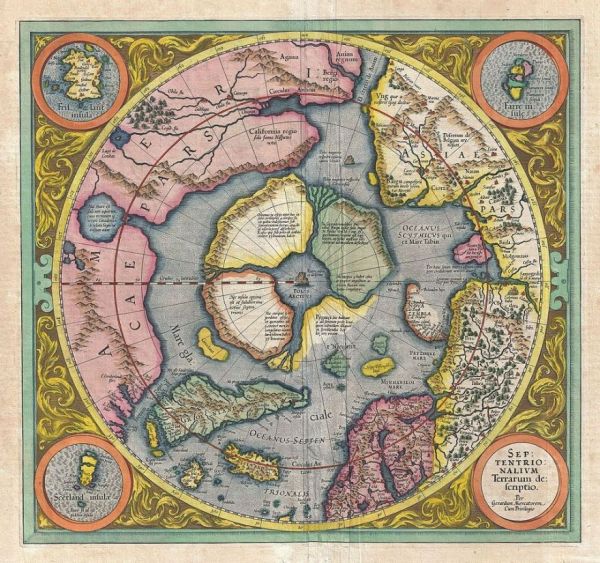
At the top of the world, there are four islands. They would form a donut, but four mighty rivers dividing these islands flow from the oceans into a sea between them, then form a whirlpool as the waters rush down into the earth. A "polar vortex," if you will. In the middle of the sea, a giant magnetic rock the size of a mountain stands. Its magnetic force pulls the needles of every compass on earth toward it, defining "north." At least that's what people thought before the North Pole was actually explored.
You can see all this in the map above, produced by esteemed cartographer Gerhard Mercator for his groundbreaking atlas published in 1595. The layout came from a 14th-century book that has been lost, but was referred to in other works. The lore of the North Pole included inhabitants of at least one of the four islands. This account of the Arctic was accepted in the Middle Ages because who was to prove otherwise? This notion was gradually changed as explorers mapped islands in the Arctic, until it was completely dropped. Read about the early concept of the North Pole at Amusing Planet.




